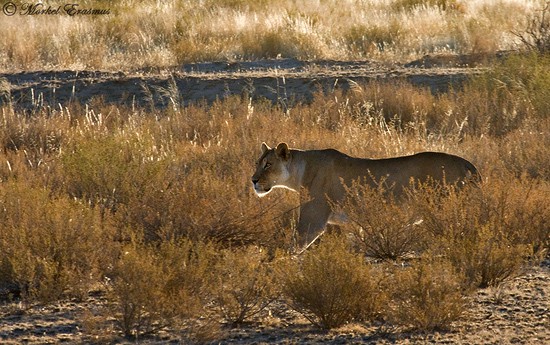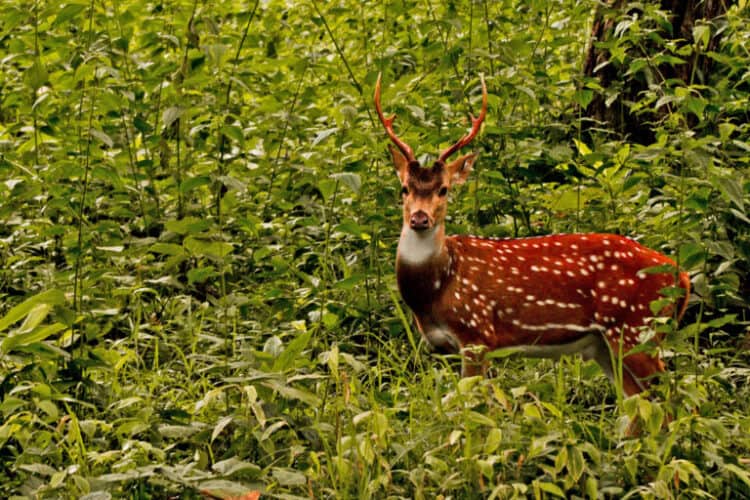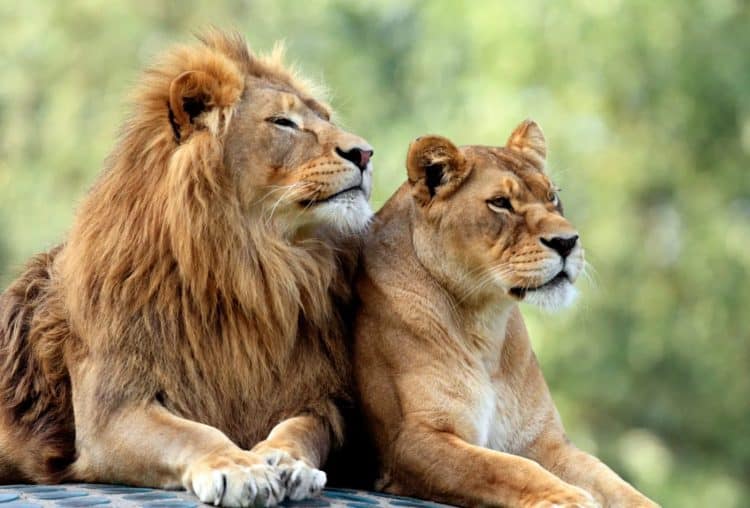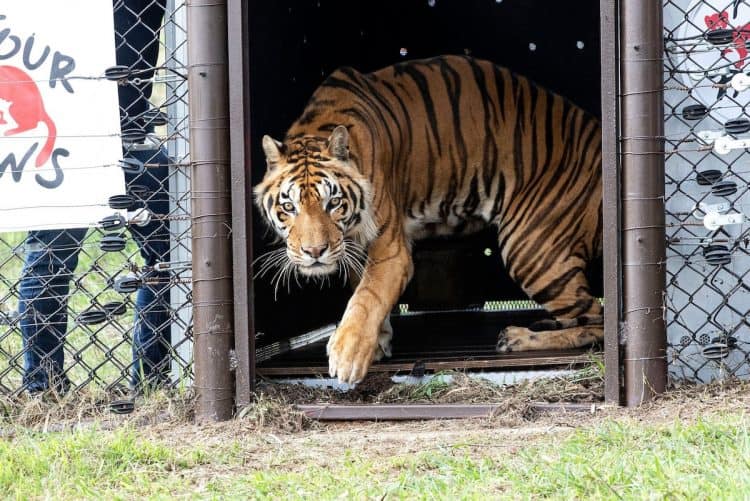I thought it was time for another “proper” blog post, don’t you think? So much has been going on in the hustle and bustle of my life that I have again started neglecting my blog – tsk tsk tsk. Things have been hectic busy on this side. Did I mention we are expecting our 2nd child later this year? We recently found out that we are expecting a boy, so soon there will be 2 pairs of little feet to pitter-patter around the house. Having a family is such a blessing and privilege and I am fortunate to have such a loving and supporting wife who knows how obsessive I can be about my passions.
After visiting the Kgalagadi Transfrontier Park again recently (you should know by now how I love the place), I was reminded by a recent experience of one of the exciting aspects of being on safari there…tracking lions. Oftentimes in the Kgalagadi I have found fresh lion tracks and used some latent knowledge of tracking handed down by my father when I went hunting with him as a boy, and some knowledge of the predators’ behaviour to eventually find a good lion sighting on my own.
Now it sounds cliche, but unlike the private lodges where there’s a tracker sitting on the front of the vehicle, in this park it’s all self-drive and you can only track animals that have actually walked in the road. So upfront it sounds quite straight-forward…but there’s actually a lot to it.
1. First off – you need to be out of the gates FIRST in the morning! If you’re not, the guy who made it out before you will probably just drive over any fresh tracks there may be. Male lions are frequently on patrol in the early hours of the morning, but it’s not uncommon to find moms with cubs or even entire prides on the road or close to it.
2. You need to know what a lion track looks like. Think your kitty cat’s feet multiplied by 20. It helps to familiarise yourself with the various predator tracks so you can distinguish between them.
3. You need to be able to tell if it’s fresh or old. If it rained last night, and there are tracks without drops in them – FRESH. If there’s lots of loose sand in the track and it’s hard to discern the shape – OLD. If the sand is scrunched up on the sides and the track is nice and clear – FRESH.
4. You need to have a keen eye. They may not necessarily be in the road. They may be lying under a bush close by or they may be a little way off to the side in long grass.
5. You need to be able to read the direction of the tracks and make a prediction on where they were going if the tracks leave the road…they may have just taken a shortcut and ended up at a nearby waterhole.
6. You need to be patient. On my recent trip I was tracking a certain pride of lions for 4 days consecutively before I found my first “usable” photo opportunity.
7. It’s not just about tracking lions. I have often found leopard, cheetah and hyena tracks too, and these also gave me a good idea of which predators were hanging around certain territories with a view of looking for them later, and even finding them indirectly as their tracks found earlier made me alert to their general presence in the area.
Here are a few images I have captured of lions in the Kgalagadi which I found by following, reading and interpreting their tracks over the last 3 years or so…
I hope you enjoyed this short post about something which makes self-drive safaris in South Africa’s National Parks so rewarding and exciting for me.
Cheers!
Morkel Erasmus
Morkel Erasmus
I used to relish writing these kinds of “bio” pieces and would flaunt the odd impressive word and use dashing grammar to make it sound like I am a boundary-shifting photographer. These days I prefer stating it in much simpler ways, much more relatable ways, much more believable ways… The fact of the matter is this: I love Africa. I love its people, its wild places and its wildlife. I love being immersed in these places, observing and photographing the fall of light on the land and the daily lives of the creatures that call it home, and presenting the results to whoever will take a look. To me, nature photography is all about being in the moment, and capturing that moment in a way that can relate to someone who didn’t have the privilege of being there with me. Sometimes I am able to capture a unique vision of the scene before me, and sometimes I just capture it the way most folks would according to classical photographic guidelines. Yet I always enjoy sharing the images and experiences and imparting the knowledge I have, both in-the-field and later online or in presentations, workshops and courses. I also just simply enjoy capturing and sharing the beauty of God's creation! The greatest thing I’ve found about wildlife and nature photography in Southern Africa is the unity and familiarity of the community of people that share this passion. We come from all walks of life and all cultures and backgrounds, yet our passion for our natural heritage and our dream to see it preserved for future generations binds strangers together and fuels conversations around campfires long after other people have run out of conversation and energy. Join me on a WildEye adventure to experience this sharing community spirit and learn to anticipate that fleeting moment and be ready for it, learn to immerse yourself in the experience without losing focus of your photographic goals…and above all, learn to see Africa anew… because there are none as blind as those who look but do not see!
- Web |
- More Posts(111)











Leave a Reply